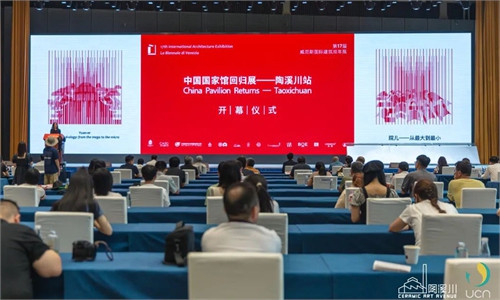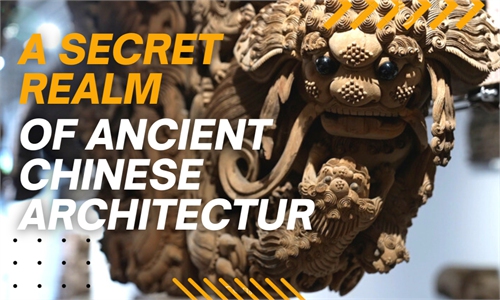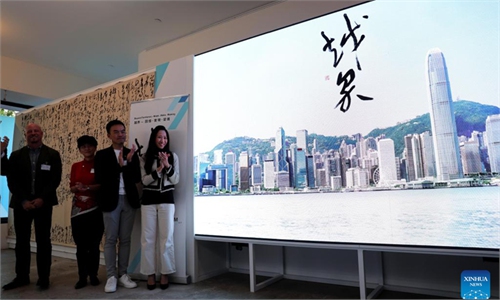ARTS / ART
Architect Kengo Kuma’s ‘sense designs’ reveal shared aesthetics of China and Japan
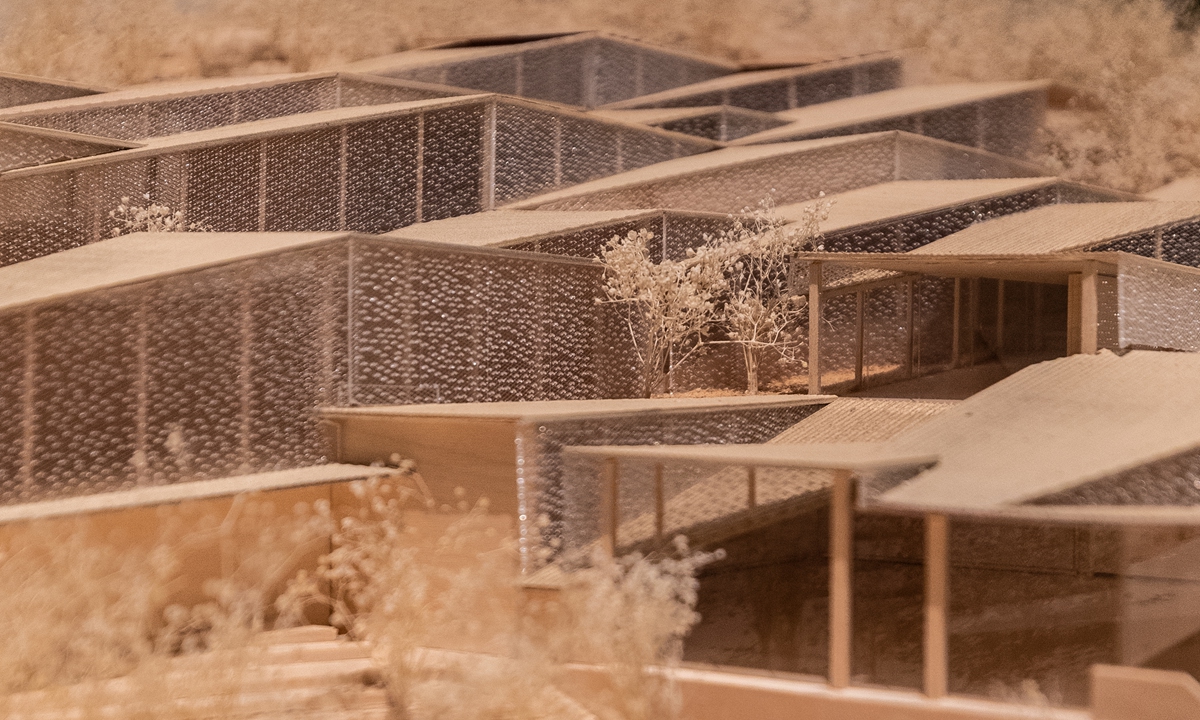
An architectural model of Kengo Kuma at the exhibition Photo: VCG
At the end of a corridor made from more than 10,000 pieces of bamboo lies Japanese architect Kengo Kuma's new exhibition in Beijing: Architecture for the Five Senses. First debuting in China 20 years ago, the 68-year-old architect is introducing a new "five senses" theory that aims to console people amid the daunting backdrop of COVID-19.Be theory or practice, many of his "sense designs" are rooted in the mutually praised cultural merits of China and Japan, Kuma told the Global Times.
Sense designs
Feeling like he was "trapped in a concrete box" by the pandemic just like many other people, Kuma pushed himself to contemplate the future of architecture in a new paradigm created by COVID-19.
Thus Architecture for the Five Senses was born.
In Kuma's theory, a space should be designed to awaken people's five senses, allowing them to be free spirits when facing reductions in mobility and communication.
Though the proposal of this theory is recent, Kuma's experiential philosophy can already be perceived in his designs for buildings such as the Crafts Museum in Hangzhou, East China's Zhejiang Province.
Completed in 2015, the museum, which hosts treasures of Chinese folk art, has an outer wall built from black tiles indigenous to the area. These slightly arched tiles suspended by steel wires not only filter sunlight, but also deliver a natural concerto for people who are sheltered by them.
"Tapping a finger on them, you hear echoing sounds. When rain drops land on them, you'll hear the music of nature," Hu Pengfei, the exhibition curator at the Guardian Art Center, told the Global Times.
An example of this poetic "music wall" has been installed in the Beijing exhibition. Alongside it are manuscripts, notes and art experiments similar to the bamboo corridor, which has been artfully translated into Bamboo Waterfall.
"Sight" and "touch" are not the only senses considered in Kuma's architectural designs. The architect told the Global Times that olfactive elements often awake his design imaginations.
"When you are talking on cell phones, you can imagine what kind of place you are, like being outside… I understand a space without using it," he said.
"I want Chinese audiences to feel the space here," Kuma told the Global Times.
"I don't think I can impress people without that [consideration for people's senses]."
Faith in China
In 2002, a designed bamboo house built near the Badaling Great Wall in Beijing was Kuma's first project in China.
Bamboo, a symbol of nobility in China, as well as other natural material such as wood appeared often in Kuma's projects. Such a nature-oriented design preference was originated in his intuitive search into the shared Asian aesthetic philosophy of China and Japan.
He told the Global Times that the two cultures have a lot in common such as the traditional game Mahjong and architectural ingenuity when it comes to wood.
The Yusuhara Wooden Bridge Museum in Japan's Kōchi Prefecture was Kuma's project inspired by Japan's balancing toy "Yajirobe" and a "wood masonry" structure that was developed based on the dougong (wooden brackets) often seen in ancient Chinese buildings such as the Forbidden City. Wood and metal were turned into "ribbons" that weave their way around the designer's another project, the Galaxy Midtown-Gemini Theater in Shanghai to show a modern yet traditional aesthetics.
Kuma said that he saw the different beauty between the solemnly elegant "thick" Chinese wood and Japan's exquisite "thin" wood craftsmanship. He told the Global Times that he would like to continue pursuing the beauty of wood and the combination of structures that are not often seen in Europe or the US.
Having studio branches in both Beijing and Shanghai, Kuma said that he has faith in China due to its open-mindedness and courage to take on challenges.
"In China, more and more clients show a willingness to undertake challenges with me. On the contrary, in Japan or the US I can clearly feel their reluctance," Kuma noted.
"When challenging blueprints have a higher possibility to be completed in China, the future statues of Chinese architecture in the world can be important and interesting."
Everyday thinker
Before his "five senses" theory, Kuma was known for promoting "defeated architecture." This design philosophy rejects high-rise buildings as a benchmark of architectural success and promotes ego-less and practical designs that are non-hostile to nature and disappear in the environment because they are in harmony with their surroundings.
This philosophy was implemented in grand projects such as the Tokyo 2020 Olympic stadium.
Kuma told the Global Times that the Japanese aesthetic essay In Praise of Shadow was one source of inspiration, while other sources of inspiration came from his hobby of tasting delicious food.
"I think that food and alcohol are very similar to architecture… if a certain dish is made in a certain village, cooking is a dialogue with vegetables and meat produced in that village," he noted.
"It is a dialogue with the space; you can get a lot of hints."
His attentiveness to everyday life has gifted him with an inimitable creativity when it comes to design materials.
In Paris, Kuma designed the Archives Antoni Clavé, a space dedicated to the abstract painting master Antoni Clavé. In order to invite natural sunlight to render rooms with a suave ambience, Kuma threw Japanese paper pulp onto expanded metal panels that brings paper's "light" and "transparent" textures to life.
He said the inspiration for this design came from viewing the master's paintings and realizing Clavé also had a deep interest in materials.
Kuma told the Global Times that besides architecture, he is also interested in art create by differently abled artists.
Yuka Yamane, a 45-year-old Japanese painter with Down syndrome, is one of Kuma's favorite artists. The artist uses pens to draw shapes such as quadrangles, and fill them slowly and neatly with colors.
She often took nearly a year to finish one of her abstract paintings.
"It [art] is related to one's essence as a human being, it is not a strategy," Kuma said.
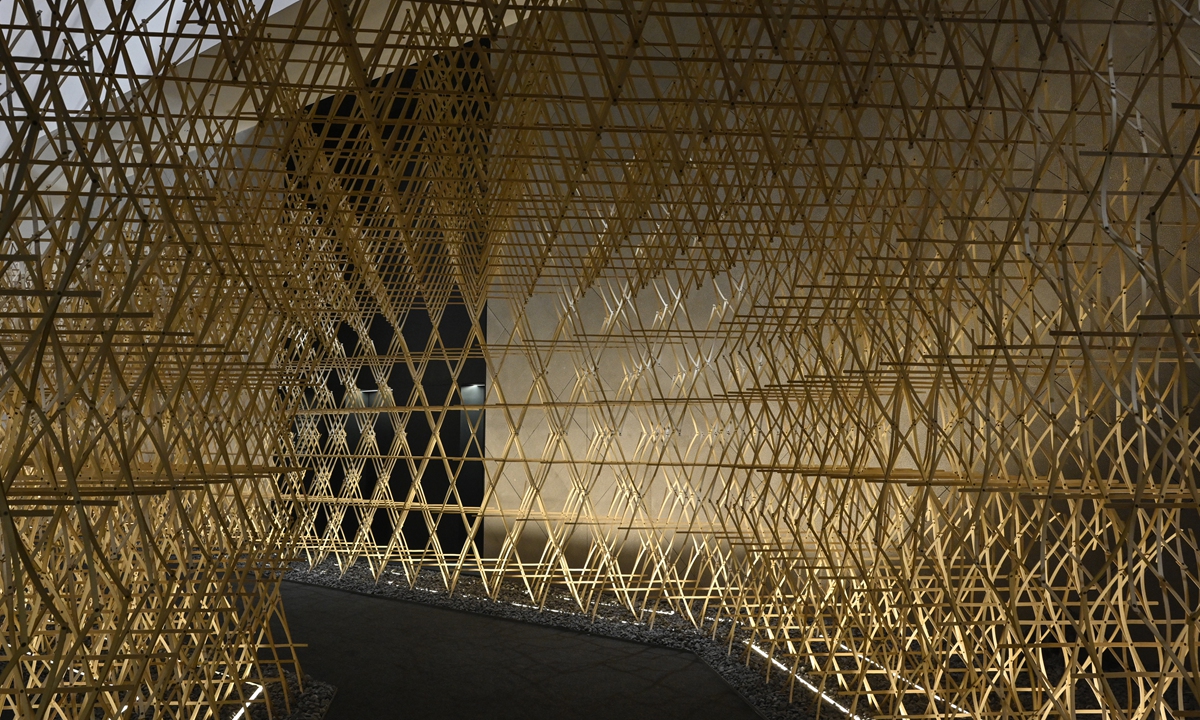
The Bamboo installation at the exhibition Photo: VCG
